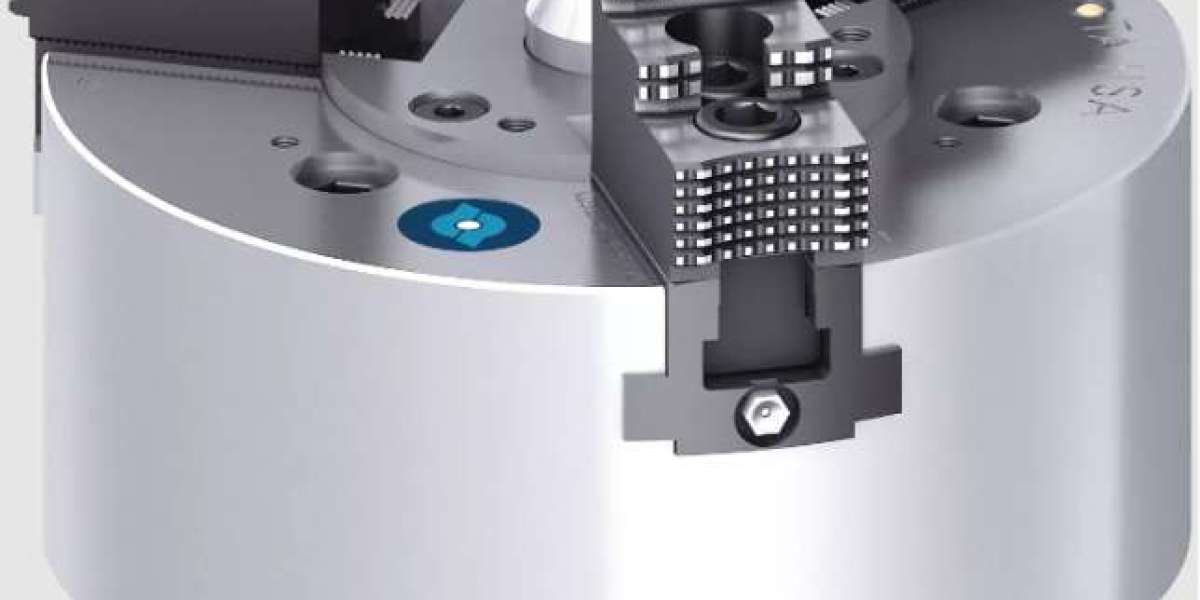Lathe machines play a pivotal role in the world of machining, enabling precision turning and shaping of various materials. One crucial component of a lathe machine is the chuck, a device that holds and rotates the workpiece. Two popular chuck types are the 3-jaw chuck and the 4-jaw chuck, each offering unique advantages and applications. In this article, we will delve into the characteristics, uses, and differences between the 3-jaw chuck, 4-jaw chuck, and the four-jaw chuck variant.
Understanding the 3-Jaw Chuck Lathe Machine
The 3-jaw chuck is a widely used and versatile chuck in lathe machining. It typically consists of three jaws that move simultaneously, allowing for quick and efficient clamping of cylindrical workpieces. The jaws are self-centering, meaning they automatically adjust to the center of the workpiece. This feature makes the 3-jaw chuck ideal for high-precision applications where rapid setup and repetitive tasks are common.
One of the key benefits of the 3-jaw chuck lathe machine is its simplicity and ease of use. Machinists appreciate its quick setup time and the ability to secure round or hexagonal workpieces with minimal adjustments. However, the simplicity comes with limitations, particularly when dealing with non-cylindrical or irregularly shaped workpieces.
Advantages of the 3-Jaw Chuck Lathe Machine
1. Speed and Convenience:The primary advantage of the 3-jaw chuck lies in its simplicity and speed. With only three jaws to adjust, setup time is significantly reduced, allowing for rapid clamping and unclamping of workpieces.
2. Centering Accuracy: The symmetrical arrangement of the three jaws ensures excellent centering accuracy. This is crucial for achieving precise cuts and maintaining dimensional consistency in the machined components.
3. Versatility: The 3-jaw chuck is well-suited for a wide range of applications, particularly when working with cylindrical or hexagonal materials. Its versatility makes it a popular choice in various metalworking industries.
Applications of the 3-Jaw Chuck Lathe Machine
The 3-jaw chuck finds its applications in a variety of machining tasks, including:Round Stock Turning: The self-centering nature of the 3-jaw chuck makes it well-suited for turning operations on cylindrical workpieces.
1. High-Precision Work: Industries that demand high precision, such as aerospace and medical, often rely on the 3-jaw chuck for its accuracy and repeatability.
2. Mass Production: In scenarios where the same part needs to be machined repeatedly, the 3-jaw chuck facilitates quick and efficient setup, contributing to higher production rates.
Limitations of the 3-Jaw Chuck Lathe Machine
- Limited gripping range: Not suitable for irregularly shaped or odd-sized workpieces.
- Eccentricity: Requires careful centering for non-round stock, potentially impacting accuracy.
- Jaw marks: May leave slight indentations on the workpiece due to the gripping mechanism.
Understanding the 4-Jaw Chuck Lathe Machine
In contrast to the 3-jaw chuck, the four jaw chuck provides greater flexibility in clamping irregularly shaped workpieces. As the name suggests, the 4-jaw chuck consists of four independently adjustable jaws. Machinists can manually position each jaw to accommodate a wide range of workpiece shapes and sizes. While this versatility comes at the cost of setup time, it opens up possibilities for machining intricate and non-symmetrical parts.
Advantages of the 4-Jaw Chuck Lathe Machine
1. Enhanced Holding Capacity: The four independently adjustable jaws allow for a more secure grip on irregularly shaped or non-symmetrical workpieces. This increased holding capacity is crucial for precision machining.
2. Eccentric Workpieces: The 4-jaw chuck excels in holding eccentric or off-center workpieces, providing machinists with the ability to precisely center and machine components that may pose a challenge for the 3-jaw chuck.
3. Flexibility: Machinists can achieve a higher degree of flexibility with the 4-jaw chuck, making it suitable for a broader range of applications and workpiece geometries.
Key Features of the 4-Jaw Chuck Lathe Machine
1. Independently Adjustable Jaws: Each jaw can be adjusted independently, allowing for precise centering of non-cylindrical workpieces.
2. Versatility: The 4-jaw chuck is highly versatile and suitable for a wide range of workpiece shapes, including square, rectangular, and irregularly contoured materials.
3. Off-Center Turning: Machinists can intentionally set the workpiece off-center, enabling unique turning operations not achievable with a 3-jaw chuck.
Limitations of the 4-Jaw Chuck Lathe Machine
- Complexity: Requires more time and effort for setup and adjustment compared to the 3-jaw chuck.
- Cost: Generally more expensive than 3-jaw chucks.
- Potential for runout: Improper jaw adjustment can lead to runout, impacting accuracy.
Choosing the Right Chuck: A Balancing Act
The best chuck depends on your specific needs and priorities. Consider these factors:
1. Workpiece shape: Round or hexagonal? Irregular or thin-walled? The 3-jaw excels for standard shapes, while the 4-jaw shines for anything else.
2. Precision requirements: Do you need absolute accuracy, or is slight tolerance acceptable? The 4-jaw offers superior control for critical projects.
3. Speed and efficiency: Prioritize quick setups and high-volume production? The 3-jaw's simplicity wins.
4. Budget: Consider the initial cost and potential time investment for setup and adjustments.
Conclusion: Mastering the Grip
Understanding the strengths and limitations of SCHUNK 3-jaw and four jaw chuck empowers you to make informed decisions for your lathe projects. Remember, the ideal choice depends on your specific needs and priorities. With the right chuck in hand, you'll be well on your way to achieving precise and efficient metalworking results.



